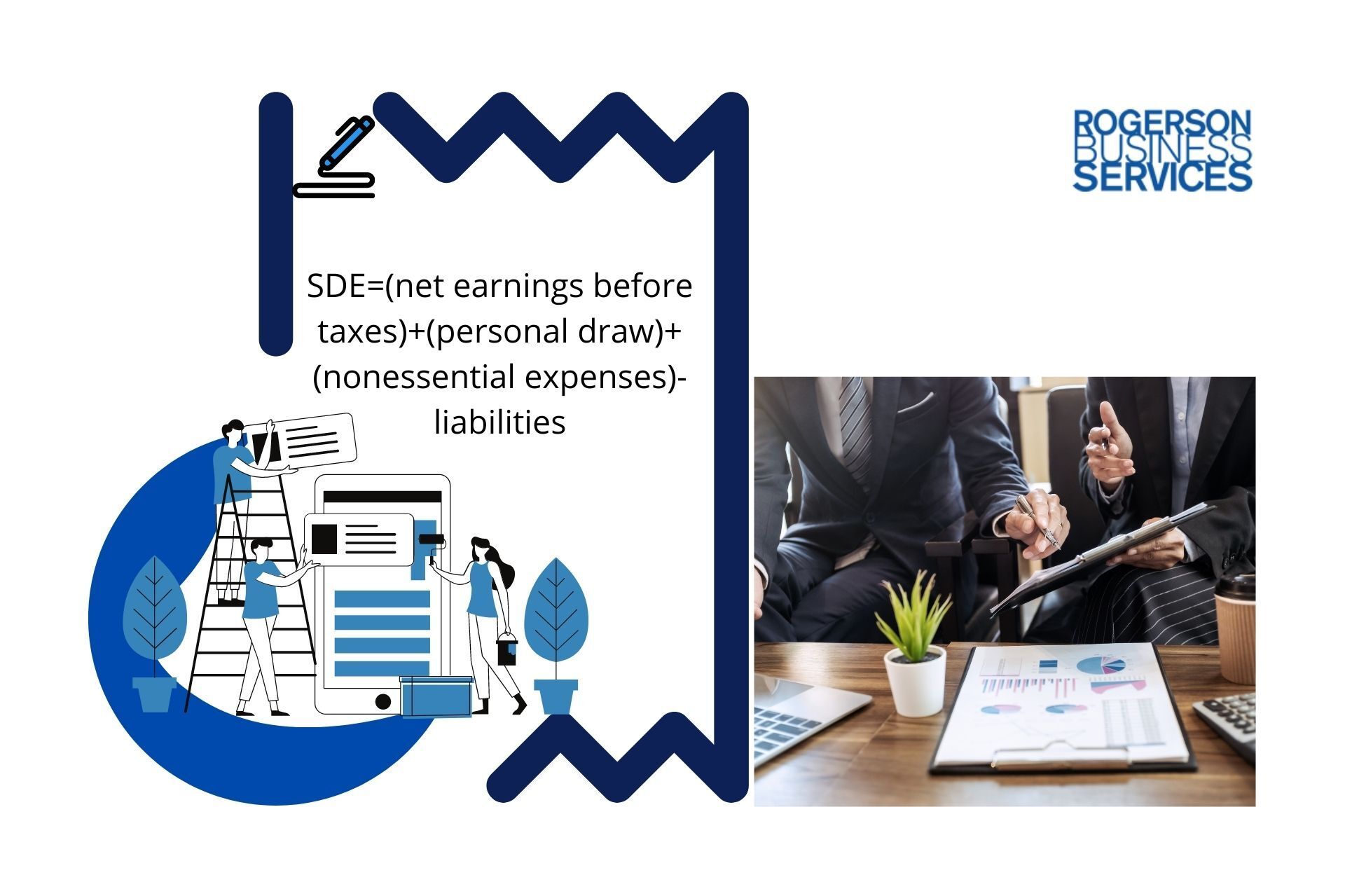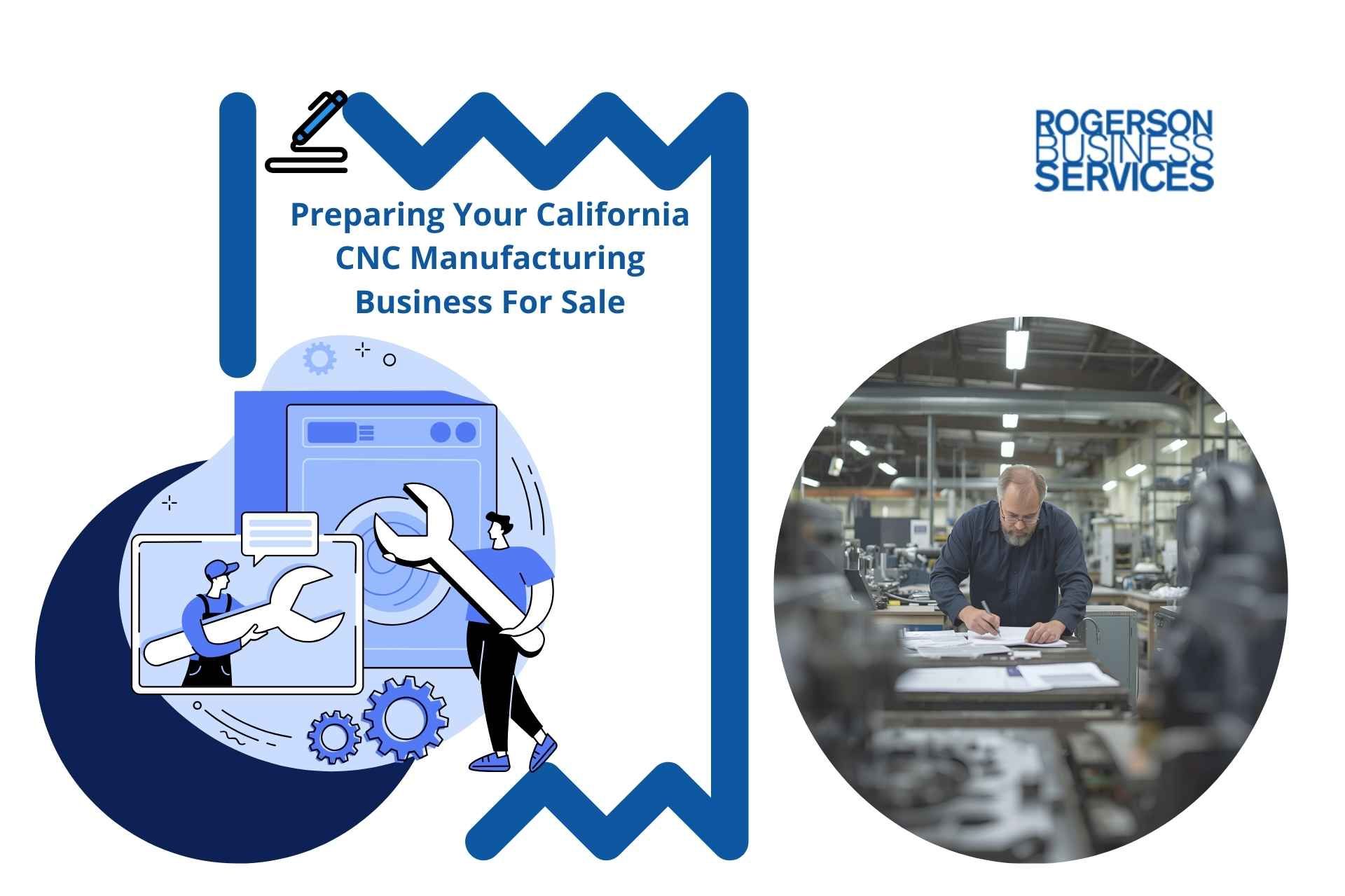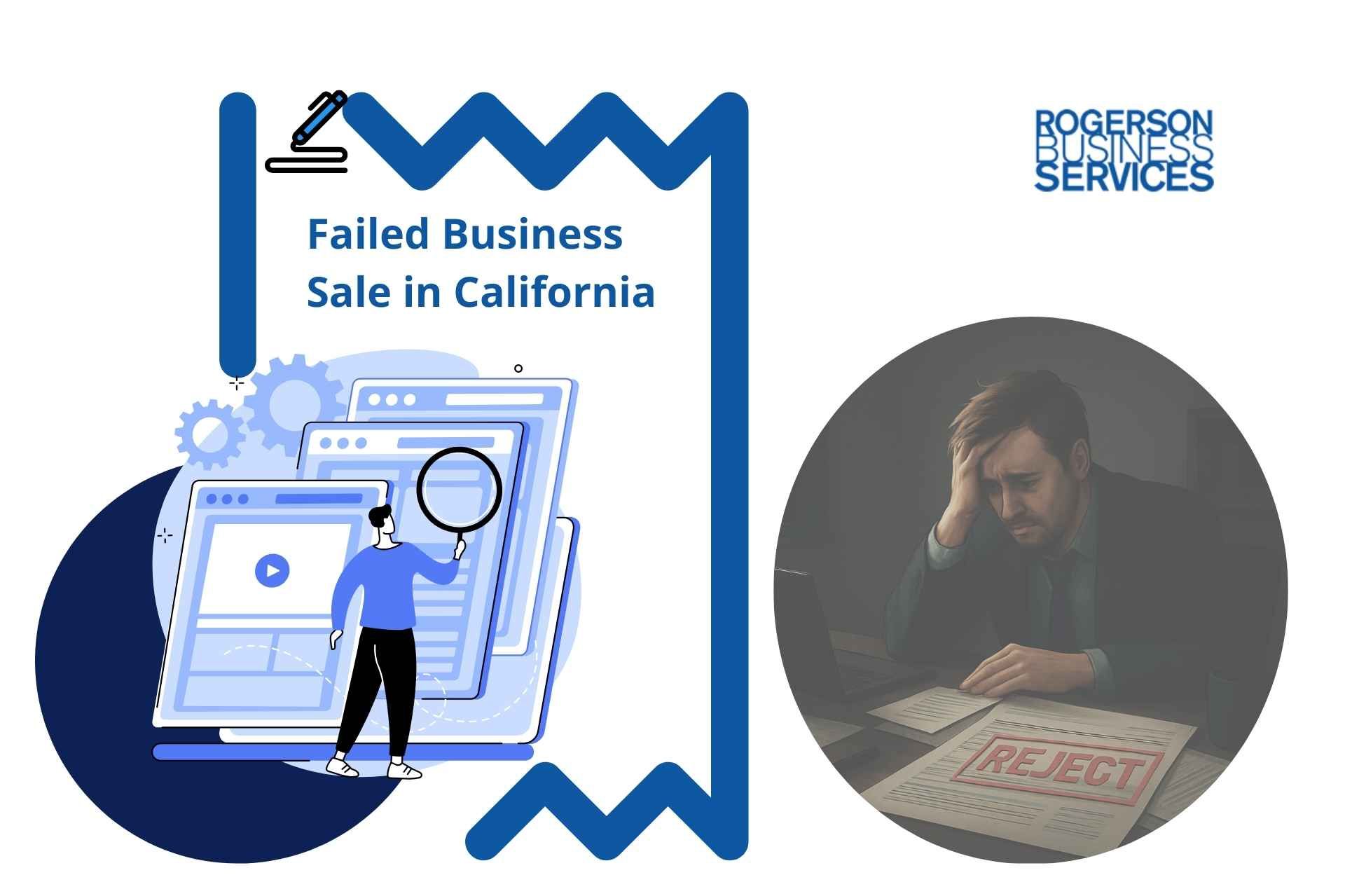Selling My Business: How Much is it Worth? | Valuing and Selling Your Business
Selling My Business How Much is it Worth
You will calculate your seller's discretionary earnings using the previous year’s financial records. Here's a valuation formula to find your business worth:
- SDE=(net earnings before taxes)+(personal draw)+(nonessential expenses)-liabilities

Are you asking this question: "selling my business how much is it worth?" Selling your lower middle market company can be an intimidating process. There are a lot of factors to take into account, making it a confusing process for many. That confusion can lead people further down the sunk cost rabbit hole or turn into missed opportunities down the line.
So, to make things easier, we’ve put together this guide on how to value your lower middle-market company in California.
How Much Should I Sell My Business For?
Before exploring business valuation methods, we need to cover some of the factors that can help you determine how to value your lower middle market business for sale in California.
To answer a popular question that a lot of retiring baby boomers business owners in the lower middle market segment ask in California: "how much can I sell my business for?", some valuation factors include:
- List of tangible and intangible assets. Consider assets like buildings, machinery, land, products, number of employees, stock, reputation, following, client value, intellectual property, track record, and years in business. One way to calculate the selling price is through a tally of all your assets.
- An income statement. You need your gross revenue, total costs, profit, and a calculation of how much you lost or made each year to answer your question, “How much is my business worth?” Many of the business valuation approaches consider your profits and sales as a primary factor for determining its worth.
- A cash flow statement. This statement answers the who, what, where, and when concerning your cash. Who gets it? What amount is it? Where did it go in the business? When did the flow occur? You need the cash flow statement for a more thorough idea of the expenses that go into maintaining the company. It can help value the business and attract potential buyers.
- Your balance sheet. In addition to the list of all the assets your business owns, you need a balance sheet. This subtracts the amount you owe from that list’s total to determine the value of your business.
- Your discretionary earnings. Seller’s discretionary earnings - or SDE - is what the cash flow looks like for you as an owner. This means adding back interest, taxes, depreciation, and other personal expenses to your total to make buying your business look more inviting to prospective owners.
If this sounds like a lot, don’t worry: an M&A advisory firm can help you figure it all out. However, you can easily perform many of the calculations for a business valuation yourself.
SDE Calculations and the Business Valuation Formula
When learning how to value a lower middle market business to sell in California, you need to start with SDE calculations for a first estimate of the market value. In general, a business will sell 2-4x the price of the SDE, with most selling for 2-3x the value.
You will calculate your SDE using the previous year’s financial records. Here are a few steps to find your SDE:
- SDE=(net earnings before taxes)+(personal draw)+(nonessential expenses)-liabilities
- Find your business’ net earnings before taxes.
- Throw in what you paid yourself (personal draw).
- Add in all your non-essential, one-time expenses, excluding the cost of whatever goods you’ve sold.
- Subtract your liabilities. These will include your unpaid bills, debts, and other expenses for which you can still be held accountable.
The total you get after all that will be your SDE. Your SDE can provide an initial estimate of the market value. However, more comprehensive types of valuations exist that can provide a better estimate of what a buyer will pay.
You do not want to overestimate its value and attract no buyers. On the other hand, you want to maximize the amount you receive. By performing multiple calculations, you can get several estimates of its worth.
Types of Business Valuations to Determine How Much is Your Business Worth
When learning how to value your business to sell in the lower middle market, you will want to explore different valuation techniques. Multiple business valuation methods depend on your industry and the market. Ideally, you could get 3-5 years of SDE for your business.
Nonetheless, the amount you receive often varies from this value. Here are corporate valuation methods to explore:
- Asset-Based: Asset-based valuation depends on your book value (BV). You can get this by subtracting any lost value from the book value.
BV=(Total Assets-Total Liabilities)-Lost Value
Valuing your business this way is easiest, but it results in the lowest value since it does not include intangible assets.
- Discounted Cash Flow: The discounted cash flow (DCF) technique uses your current cash flow and discounts some of it based on the chance of future losses (risk).
DCF=CF1(1+r)1+CF2(1+r)2+...+CFn(1+r)n where CF = the cash payments investors get, r = discounted rate, and n = the time period.
Usually, you calculate r using the weighted average cost of capital. Also, you generally consider five years. This approach determines the present value of your company, which is best for newer businesses that are not profitable yet.
- Market Approach: Here you determine a value using the sale price of your competitors. You can use either competitor profits or sales when calculating business valuation.
MA=Competitor Selling Price Competitor Profits or Sales*Your Profit or Sales
This technique has several flaws. Your competitor may have significantly different profits and cash flows or the sale agreement could include non-cash value assets. As such, you should only use this fair market value method if your competitor has an extremely similar business.
Valuation Multiples: Selling My Business How Much is it Worth
Valuation multiples are ratios that help to calculate business valuation. They also assist in comparing the value of firms with different characteristics.
You can determine the approximate value of a company by comparing it to the value of similar businesses. This valuation reflects reality more than some of the aforementioned techniques since it is derived from current trading prices.
However, differences in companies mean that one cannot compare their absolute values. Valuation multiples help to standardize the worth of these companies to make practical comparisons.
- Valuation Multiple=Value Measure Value Driver=Enterprise/Equity Value Business Metric
How much can I sell my business for? These company's (financial and operating) metrics can help in determining your business value:
- Earnings before interest, taxes, depreciation, and amortization (EBITDA)
- Revenue
- Earnings before interest and taxes (EBIT)
- Free cash flow to the firm (FCFF)
- Net income
- Earnings per share (EPS)
- Free cash flow to equity (FCFE)
You can use revenue, EBITDA, EBIT, and FCFF when utilizing the enterprise value as the numerator as they are un-levered (pre-debt). The others only work when you use equity value since they are levered (post-debt).
Some valuation multiples are:
- Price-to-earnings ratio (PE=Enterprise Value EBITDA)
- Price-to-earnings-to-growth ratio (PEG=Enterprise Value EBIT)
- Price-to-book ratio (PB=Enterprise Value Revenue)
Calculate the Selling Price When Selling a Lower Middle Market Business
We have discussed several business valuation models that you can use to calculate what a lower middle market business is worth in California. Here are some examples using the above company evaluation methods.
Let’s start with the asset-based valuation approach. If you have $55,000 assets and $28,000 liabilities, you have a company book value of $27,000. Say that you purchased some equipment for $3,000 and it is now worth $1,500. You have a lost value of $1,500, so you would subtract this from the book value. Your business would have a value of $25,500 using this technique.
Using the discounted cash flow model, let’s assume three years. Your first cash flow is $3.1 million, the second is $3.5 million, and the third is $3.3 million. You can calculate r from the weighted average cost of capital (WACC) using the formula:
- WACC=(EE+D*Re)+(DE+D*Rd*(1-Tc)
In this formula, E = equity market value, D = debt market value, Re = equity cost, Rd = debt cost, and Tc = corporate tax rate. Let’s say you have a WACC (r) of 0.048. You can calculate the DCF as below:
- DCF=CF1(1+r)1+CF2(1+r)2+CF3(1+r)3=$3,100,000(1+0.048)1+$3,500,000(1+0.048)2+$3,300,000(1+0.048)3=$9,011,762.65
The market approach is similar to the valuation multiples method. You create a ratio using your competitor’s data and multiply it by your profit and sales. For example, your competitor recently sold their company for $8.6 million after making $5.2 million in profits that year.
These numbers would lead to a multiplier of 1.654. If your profits were $4.8 million, you could sell your company for $7,939,200, or about $7.9 million.
How do I calculate the value of my business with valuation multiples? Let’s say that your EBITDA is $500,000 and your price-to-earnings ratio is 3. You could calculate the approximate value like this:
- Value=Metric*Multiple=EBITDA*PE=$500,000*3=$1,500,000
In this case, your company would get valued at $1,500,000.
Hiring a Mergers and Acquisitions Advisor
You don’t want to cease business operations just because you need to sell your lower middle market company in California. Hiring a mergers and acquisitions (M&A) firm can help.
M&A advisors will help to maximize business value before selling. They can take you through the necessary steps to sell your lower middle market firm in California
Initially, an M&A advisor will collect any documents needed for performing a business valuation. They can value it using multiple techniques to determine the ideal market price. The advisor will also gather any legal forms for selling the lower middle market business in California.
Next, the advisor or advisory form will find and interview potential buyers for your business. They work with you to determine the desired customer and help identify suitable individuals. Then, they work with you to interview and inform the customers concerning your lower middle-market company.
Lastly, an M&A advisor will manage your financial due diligence to close the sale. They’ll work with the buyer and seller to come to an acceptable agreement, review documents, and process the final steps in transferring ownership.
Conclusion
When valuing and selling your lower middle market business and determining how much is it worth, you will come across many firm valuation techniques. Depending on your industry, time in business, and the present market, you might benefit from one method more than another.
Make sure to consider your assets and finances when selling your business. Start by calculating the SDE and working your way through other applicable business valuations.
One technique that we highly recommend is the valuation multiples method. There are many variations of this option, and you can readily compare your company to others once you find a few multiples.
If you find that you are still struggling with selling and valuing your business to determine how much it's worth, consider working with an M&A advisory firm. These professionals specialize in business valuations. They can also find potential buyers and help you close the deal.
Are you a retiring business owner looking to exit your lower middle market business in California? Here are five tips to get you started:
1. Don't wait until the last minute to start planning your exit. The process of selling a lower middle market business can take a long time, so it's important to start early.
2. Have a clear idea of what you want to get out of the sale. Know your goals and what you're willing to negotiate.
3. Choose the right type of buyer. Not all buyers are created equal, so do your research and find the right one for your business.
4. Be prepared for a lot of due diligence. M&A buy-side due diligence is when buyers will want to know everything about your business, so be ready to provide documentation and answer questions.
5. Be flexible with the terms and conditions of the deal. It's important to be open to negotiation to get the best possible deal for your business.
Rogerson Business Services, also known as, California's lower middle market business broker is a sell-side M&A advisory firm that has closed hundreds of lower middle-market deals in California. We are dedicated to helping our clients maximize value and achieve their desired outcomes.
We have a deep understanding of the Californian market and an extensive network of buyers, which allows us to get the best possible price for our clients. We also provide comprehensive support throughout the entire process, from initial valuation to post-closing integration.
Our hands-on approach and commitment to our client's success set us apart from other firms in the industry. If you consider selling your lower middle market business, we would be honored to help you navigate the process and realize your goals.
If you have decided to value and then sell your lower middle market business or still not ready, get started here, or call toll-free 1-844-414-9600
and leave a voice message with your question and get it answered within 24 hours. The deal team is spearheaded by Andrew Rogerson, Certified M&A Advisor, he will personally review and understand your pain point/s and prioritize your inquiry with Rogerson Business Services, RBS Advisors
Go to the next article: Part of business valuation to answer what's my company worth series ->
Hey there! Can we send you a gift?
We just wanted to say hi and thanks for stopping by our little corner of the web. :) we'd love to offer you a cup of coffee/tea, but, alas, this is the Internet.
However, we think you'll love our email newsletter about building value and properly position your company before transition/exit your business ownership.
As a special welcome gift for subscribing, you'll also get our helping and educational guides, tips, tutorials, etc.. for free.
It's filled with the best practices for retiring serial business owners like Dan Gilbert, Larry Ellison, Warren Buffett, and many more.
Just sign up for our emails below.


